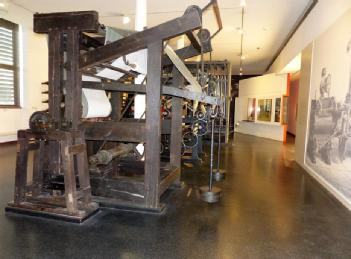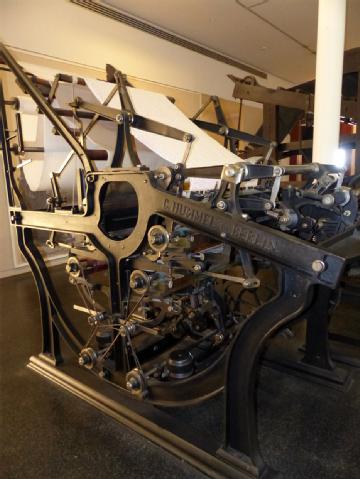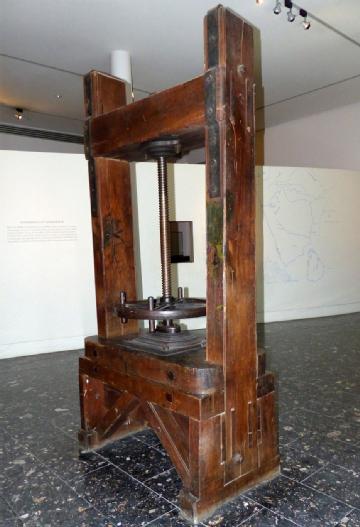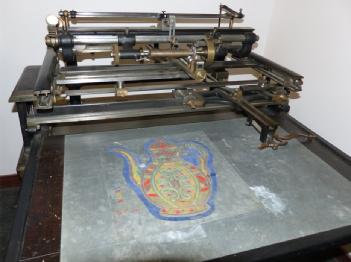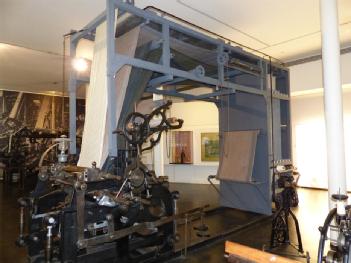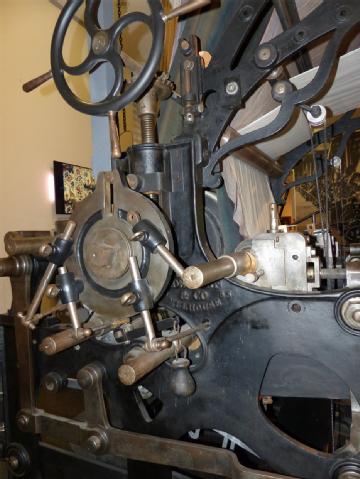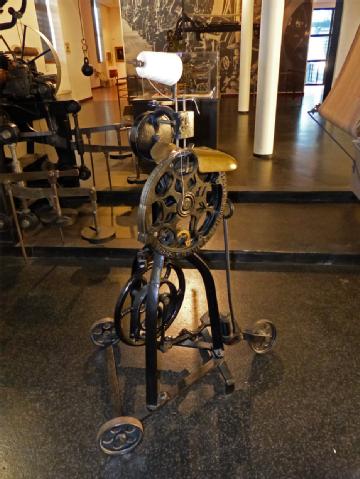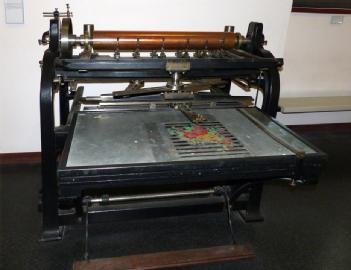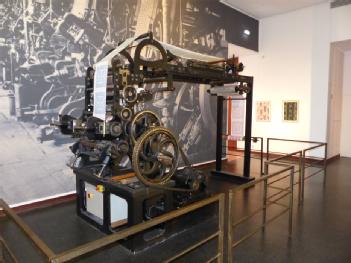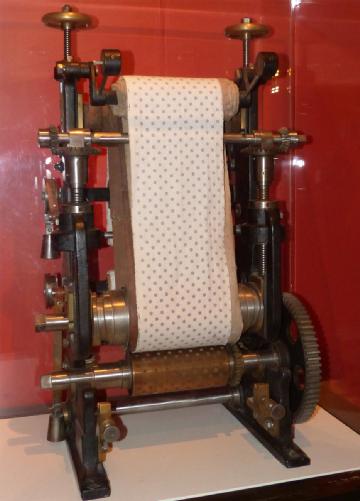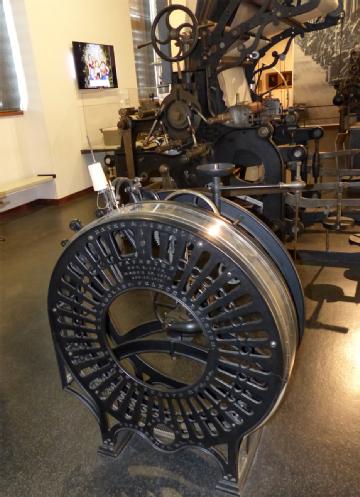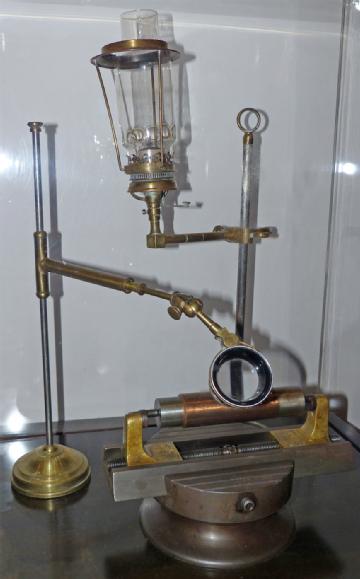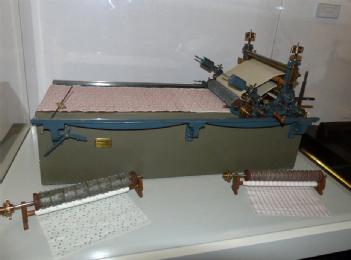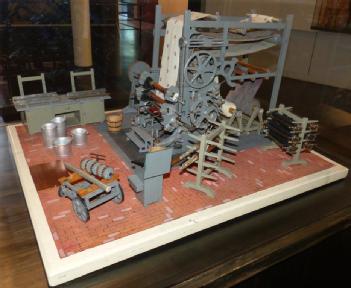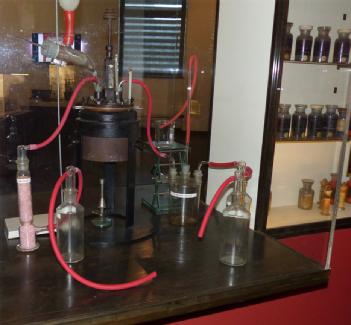
Le Musée de l'Impression sur Etoffes |
68072 Mulhouse, France (Grand Est) |
|
| Address |
14 rue Jean-Jacques Henner
|
| Floor area | unfortunately not known yet |
Textile production
- Craft
- Technical and functional models
- Printing technology
|
Opening times
|
Wednesday - Sunday: 1 - 6pm
Mercredi au Dimanche: 13h - 18h
Mittwoch - Sonntag: 13 - 18 Uhr |
||||
|
Status from 04/2023
|
Full price: 10 €; reduced: 5 €; Children (4 - 18 years old): 2,50 € Family (2 adults + 2 children under 18 years old): 20 € Plein: 10 €, réduit: 5 €; enfant (de 12 à 18 ans): 2,50 €; famille :(2 adultes + 2 enfants de moins de 18 ans) : 20 € |
||||
| Contact |
|
||||
| Homepage | www.musee-impression.com | ||||
| Location / Directions |
Tram 1 et 3 arrêt Gare Centrale Tram-Train arrêt Gare Centrale |
| Description | The Museum of Printed TextilesIn 1833, a group of textile manufacturers based in and around Mulhouse formed an Industrial Society known as the "Societé Industrielle". They decided to collectively archive the designs they produced. In order to complement their own personal collections they added designs from other countries, and from earlier times. This collection grew in importance to become what is today the premier collection of printed textiles in the world. Room 1 IntroductionRanging from a sumptuous 18th Century decorative hanging, to a mass produced T Shirt used for advertising purposes, the art and craft of textile printing covers a vast area. To define textile printing as "the reproduction of a design or decoration", using an implement charged with a dye paste, is obviously too simple. To decorate a fabric involves today as in earlier times, the skills of a large number of dedicated craftspeople. The processes used are often laborious, and in earlier times, dangerous. Artists, designers, engravers, chemists and printers have worked together throughout the centuries and the fruit of their labor, as well as being useful and decorative result, holds an important place in the sociological hierarchy of it's time. Room 2 The "Indiennes"This room invites the visitor to study at close range the very first decorative textiles using the mordant technique which skillfully uses metallic salts to fix the colors onto the cloth. Printed onto a lightweight calico, these decorative panels were brought into Europe at the end of the 16th Century. Discovered by a population used to wearing heavy woolen, linen and highly embroidered silks, the freshness, and brightness of the designs, coupled with the lightweight cloth quickly seduced the European market, in terms of both decorative and apparel textiles. Room 3 18th Century History and TechniqueTechnically, Printing on textile can be defined as the reproduction of one decoration by application of one tool loaded with colouring material on a textile support. In 18th century, the engraved Wood block, used since the 14th century for pigments printing, dominates. The meeting between the proceeds of coloration from India provokes its development. Room 6 19th Century : Technique and ProductionIn 1769 Watt and Boulton invented the first steam driven machine. Unfortunately the high accident rate, coupled with heavy pollution slowed down it's progress. The year 1783 saw the first patent for textile printing machine using engraved copper rollers. Thomas Bell, a Scotsman was it's inventor. Fourteen years later, the textile manufacturer "Jouy en Josas" put into production the first copper roller textile printing machine in France. A rival machine, invented by Jean Louis Lefebvre at the beginning of the 19th Century proved to be very successful, and as widely used in Beauvais, the Paris area as well as in Alsace and Germany. Room 7 Life and History in the 19th CenturyIn which historical context did the 19th Century textile industry flourish in France ? The "S.I.M", Mulhouse's Industrial Society was created in 1825 by a group of 25 young industrialists, to promote research and development in all area's of the textile industry. A specialized magazine was edited, and prizes were given to encourage young inventors.
|
[dsp_museum_detail.cfm]
| Data Compliance | More Information |
 musee-impression.com
musee-impression.com 